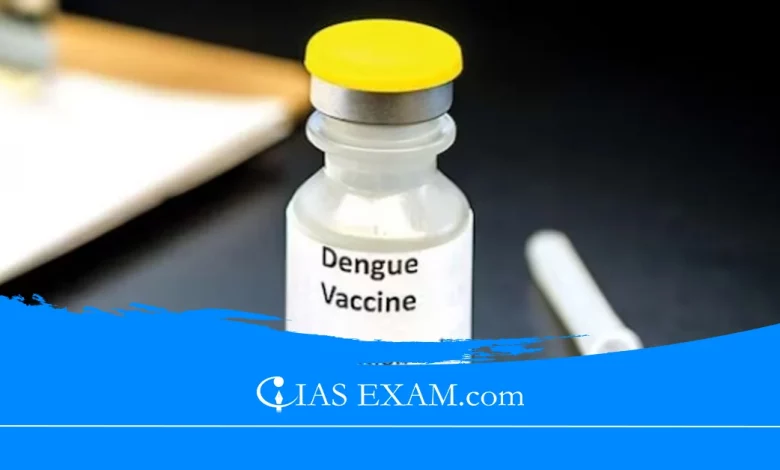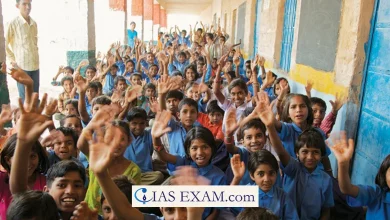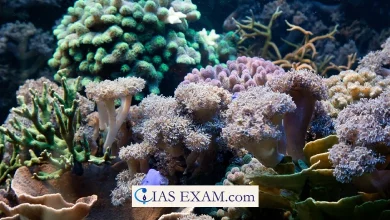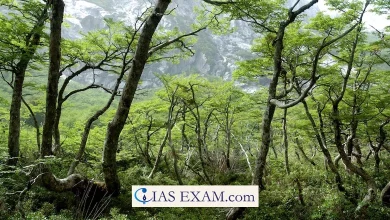Dengue Vaccine Expected to Hit Markets by Mid-2026
Syllabus: Science and Technology[GS Paper-3]

Context
According to K. Anand Kumar, the Managing Director of Indian Immunologicals Limited, a commercial vaccine for dengue could be ready by mid-2026. The company has completed the initial phase of clinical trials to ensure the vaccine’s safety.
Key Points
- IIL dengue vaccine will undergo additional tests in second and third phases of trials, such that we think it will be available in the market by mid-2026.
- Through obtaining strains of virus from the Virology Institute of the National Institutes, vaccine development has been made.
- The efforts of protecting people from these viruses are equally under IIL’s umbrella. IIL aims to develop a vaccine against Zika and Kyasanur Forest Disease also.
- Through the Indian Council of Medical Research, we are the influencing force behind the Zika vaccine clinical trials and collaborating in the development of the KFD with IIL.
- Furthermore, IIL came up with a vaccine of HAV which has been named as Havisure and has made a good performance in the market.
Details about development of Vaccine
- Indian Immunologicals Limited (IIL), a member of our pharma group of companies, didn’t indicate when the dengue vaccine would be available, but it hopes to release it in the middle of 2026.
- This approach is the outcome of the growing public health concerns in India due to the similarity of conditions to the disease.
- The development of the vaccine has progressed in the manner that the first clinical trials involving only 18-50 year old persons -and with no side effects reported- has given a signal of good safety and effectiveness.
- In particular, IIL partnership with NIH, the U.S. National Institute of Health, in terms of securing a supply of the virus from which the vaccine would be developed, was crucial in this venture.
Challenges
- The development and launch of IIL Dengue Vaccine which is expected to happen by mid-2026 has several challenges.
- Such things as rigorous clinical trials to ensure the safety and effectiveness of the vaccine, going through the process of regulatory approvals, and solving the logistical problems that may arise during the vaccine development and distribution are also important.
- Contrary to the traditional prevention methods, acceptance by the public and addressing vaccine hesitancy are the other most pressing issues especially in the dengue virus endemic zones.
Dengue
- Dengue is a viral infection transmitted by Aedes mosquitoes. It’s prevalent in tropical and subtropical regions worldwide.
- Dengue is widespread in tropical and subtropical climates.
Symptoms and Diagnosis
- Symptoms, appearing 4-10 days after a mosquito bite, include high fever, severe headache, pain behind the eyes, joint and muscle pain, fatigue, nausea, vomiting, and skin rash. Diagnosis is typically through blood tests.
Treatment and Management
- There’s no specific treatment for dengue. Management involves relieving symptoms with pain relievers, fever reducers, and maintaining proper hydration. Severe dengue requires hospitalisation.
Prevention and Control
- Prevention focuses on reducing mosquito habitats and exposure. Use of mosquito repellents, wearing long-sleeved clothing, and ensuring windows and doors have screens are effective. Community efforts to eliminate standing water where mosquitoes breed are crucial.
Conclusion
The development of a dengue vaccine is a significant milestone in global public health. It has the potential to control and reduce the spread of dengue fever, a major concern in tropical areas. However, its impact will depend on factors such as effectiveness and accessibility. Despite this, the introduction of the vaccine is a positive step towards reducing the global impact of dengue fever.
Source: The Hindu
UPSC Mains Practice Questions
Q.Examine the potential impact and challenges of introducing the anticipated dengue vaccine by mid-2026 on global public health, particularly focusing on its implications for tropical and subtropical regions where dengue is endemic.





.png)



